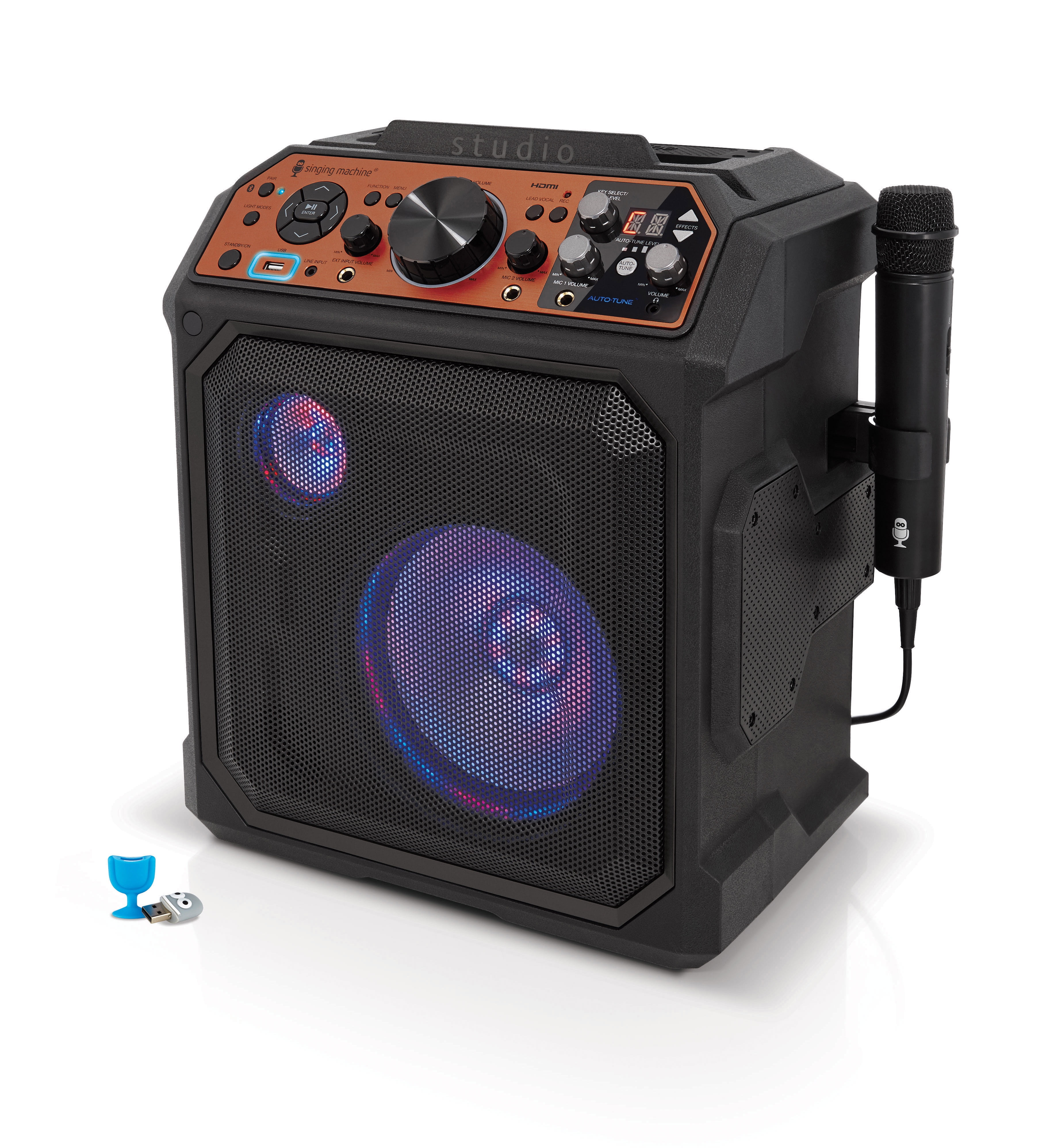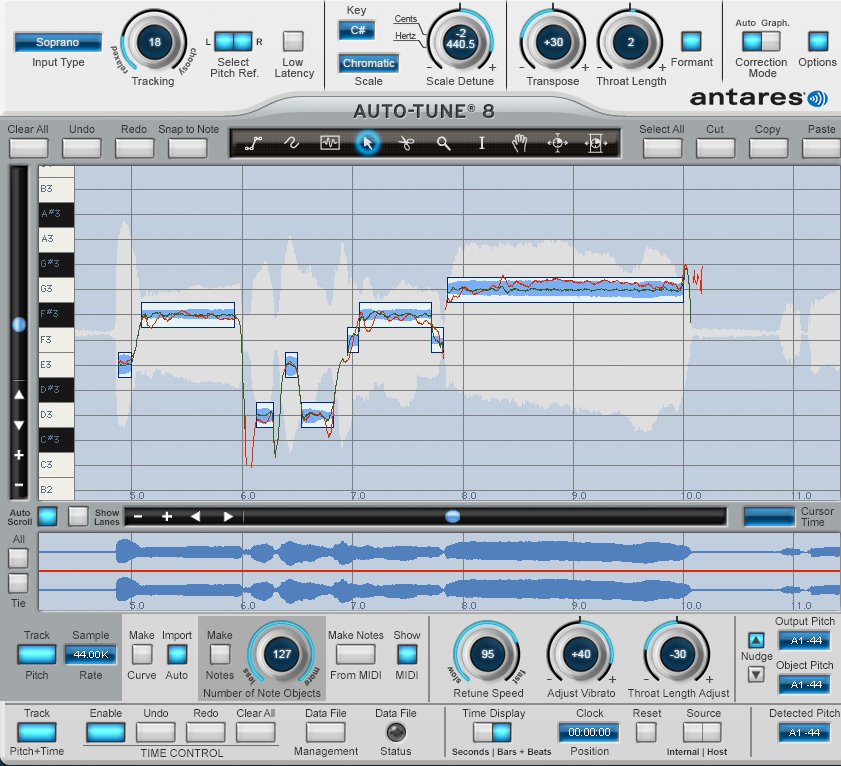Does First To Eleven Auto Tune
- Sep 11, 2010 The beauty of Auto-Tune, Alpert said, is that instead of an artist having to sing take after take, struggling to get through a song flawlessly, Auto-Tune can clean up small goofs.
- The first thing we need to do is capture, or “Track Pitch”, our audio track into Auto-Tune so that it can analyze it, draw a graphic representation of the audio pitches, and respond appropriately.
- Does First To Eleven Auto Tunes
- Does First To Eleven Auto Tune 2017
- Does First To Eleven Auto Tuners
- Does First To Eleven Auto Tune Lyrics
Sep 17, 2018 Correctly done or not, West’s first notable foray into Auto-Tune was a guest verse in Young Jeezy’s “Put On” in the summer of 2008—very much a dry (or weepy-moist) run for Heartbreak in. Or would it be something completely different? Well, and I can’t believe that I’m saying this right now, if you use auto tune you really are a bad singer. Before we get into this controversial subject of just how bad a singer you have to be to use auto tune, we might first explain exactly what auto tune is and how it works. Jul 20, 2017 While the talkbox and vocoder give songs a retro feel, Auto-Tune was originally used on futuristic pop hits. In 1998, Cher’s “Believe” was one of the first commercial recordings to use the.
Latest Version:
Auto-Tune Pro 9.1.0 LATEST
Auto-tune full crack. Antares AutoTune 8 crack is developed by the Antares technologies.
Requirements:
Windows 7 / Windows 7 64 / Windows 8 / Windows 8 64 / Windows 10 / Windows 10 64
Author / Product:
Antares Audio Technologies / Auto-Tune Pro
Old Versions:
Filename:
Auto-Tune_Pro_v9.1.0_Windows.zip
Details:
Auto-Tune Pro 2020 full offline installer setup for PC 32bit/64bit
Does First To Eleven Auto Tunes
is the most complete and advanced edition of Auto Tune for Windows PC. It includes both Auto Mode, for real-time pitch correction and effects, and Graph Mode, for detailed pitch and time editing. For twenty years, the tool has been the professional standard for pitch correction, and the tool of choice for the most iconic vocal effect in popular music.Now, with the introduction of Auto-Tune Evo VST, it’s more versatile and easy to use than ever before, thanks to a totally redesigned interface and powerful new processing, editing, and navigation features. Added automatic key detection with the new Auto-Key plug-in (included with Auto Tune purchase), Classic Mode for the “Auto-Tune 5 sound,” real-time MIDI Control, and ARA for closer integration with supported DAWs.
Both the Auto Mode and Graph Mode interfaces have been redesigned to offer the most efficient, flexible, and intuitive workflow for professional users and beginners alike. Antares Autotune VST also includes Flex-Tune and Humanize for more transparent and natural-sounding tuning, and Low Latency mode so you can perform in real time without distracting delay.

It also features Time Correction for non-destructive time editing, as well as Formant Correction, Vibrato Controls, and Throat Length Modeling. Whether you want to quickly touch up a few questionable notes or meticulously polish an entire performance, Auto-Tune for PC offers the professional pitch correction and classic effects you’re looking for.
In addition to key and scale, Auto-Key also tells you the reference frequency of your music. Most modern music is tuned so that A is equal to 440 Hz, but this is not always the case. If your music or samples are tuned to a different reference frequency, Auto-Key will show you what it is, so you can make the necessary adjustments when applying pitch correction or selecting samples.
Features and Highlights
- Auto-Tune Pitch Correction and Vocal Effect
- Low Latency for Live Performance and Tracking
- Humanize Function
- Automatic Formant Correction
- Adjustable Throat Modeling
- Create and Adjust Vibrato
- Real-Time MIDI Control
- Auto-Motion Melodic Pattern Generation
- Classic Mode for the 'Auto-Tune 5 Sound'
- Auto-Key: Automatic Key Detection
- Flex-Tune Transparent and Flexible Pitch Correction
- Transpose: Real-Time Pitch Shift
- Graphic Pitch Editing
- Graphic Time Editing
- ARA Support (Audio Random Access)
- Generate Note Objects from MIDI
- Adjust Tuning Parameters on Individual Notes
Note: 10 days trial version. Requires a compatible host program that supports the VST format.
Also Available: Download Auto-Tune for Mac
- Font:
- +
- -
The following sentence might come as a huge shock to teens and Millennials, so stop tweeting for a second, kids, and get prepared for a totally outlandish statement. Here it is: Once upon a time, pop singers were actual singers.
- Autistic ballerina dances her way into hearts
In a popular YouTube video, the beaming little ballerina dances an entire four-minute routine seemingly perfectly, matchin..
- Autistic ballerina dances her way into hearts
Yes, I know. That’s hard to comprehend since the pop charts are now dominated by artists who use Auto-Tune, the software plug-in that corrects the pitch of those who can’t really cut it in the vocal department and turns their vocals into robo-voices. While everyone under 30 recovers from that revelation, here’s what I mean by “actual singers.”
Back in the day, pop artists like Frank Sinatra and the Beatles used to be able to record albums in just a few days. Country musicians like Patsy Cline and George Jones trudged through grueling tours in out-of-the-way rural locales yet still missed nary a note. R&B musicians like the Supremes and the Four Tops navigated their way through complex choreography but still belted out songs out like their lives depended on it.
And while today, we still have singers with massively impressive pipes, a whole lotta them could never have rocked it for real like the Motown gang. These days, artists are able to get by on looks, publicity and aid from Auto-Tune.
You can hear the robotic, processed sound of the plug-in on recent hit records like “Blame It” by Jamie Foxx and T-Pain, “Just Dance” by Lady Gaga and “Right Now (Na Na Na)” by Akon. It’s also heard on tracks by Kanye West, Britney Spears and Lil Wayne. When West attempted to sing “Love Lockdown” without the plug-in on “Saturday Night Live,” the results were none too impressive and got ridiculed online. You can hear 10 examples of “Auto-Tune Abuse in Pop Music” on Hometracked, a blog geared toward home recording enthusiasts.
Paula Abdul also uses Auto-Tune on her new song, “Here for the Music,” which she performed (i.e. lip-synched) on “American Idol” May 6. It was evident just how artificial Abdul’s vocals were when she was followed by Gwen Stefani, who gave a warts-and-all live vocal on No Doubt’s “Just a Girl.”
Country and rock singers are said to use Auto-Tune to protect themselves from hitting bum notes in concert. Pop singers use it when they have a hard time singing while executing complicated dance moves (raising the question as to why they’re letting their dancing take precedence over their music). Auto-Tune has become so ubiquitous that indie rockers Death Cab for Cutie wore blue ribbons at this year’s Grammy Awards ceremony to protest its overuse.
Building the ‘perfect’ beast
The prevalence of Auto-Tune comes from two longstanding pop music traditions — the desire to alter the human voice and the quest for perfection at the expense of real talent and emotion.
The first of these can lead to inspiring moments, as the New Yorker’s Sasha Frere-Jones noted in an essay last year. Pioneering voice tweakers include producer Quincy Jones, who punched up Lesley Gore’s vocals with double tracking on “It’s My Party,” and George Martin, who gave us a childlike sped-up John Lennon on “Lucy in the Sky with Diamonds.” Later on, Peter Frampton wowed audiences with his talk box guitar effect and a decade later, vocals were being put through harmonizers to get jarring outer space effects.
Of course, to pull off any of those effects, you had still had to be able to sing. With Auto-Tune you don’t.
Then there’s the quest for perfection. By the 1970s, producers were able to edit or splice together vocal takes from various tracks and eventually they started to use hardware that corrected vocal pitch to create “perfect” performances. When the sound editing program Pro Tools became the industry norm in the 1990s, kludged-together vocal tracks became the norm.
But too much meticulousness in pop music strips away passion. And the very reason we listen to music, noted the late rock critic Lester Bangs, is to hear “passion expressed.” Auto-Tune makes people sound like robots. And if there’s no feeling, why listen at all?
Some people apparently aren’t listening anymore. Sales of major label CDs are down. But more authentic sounding music still has fans. Paste magazine recently reported that indie music is selling more, and the one area of commercial music that’s remained popular is “American Idol,” where you can’t fake it (unless you’re Paula Abdul).
Does First To Eleven Auto Tune 2017
The producers speak
A lot of producers like to use Auto-Tune because it saves time, says producer Craig Street, who has worked with Norah Jones, k. d. lang and Cassandra Wilson. “If you have a smaller budget what you’re doing is trying to cram a lot of work into a small period of time,” Street says. “So you may not have as much time to do a vocal.”
Craig Anderton, a producer and music writer, observes that Auto-Tune “gets no respect because when it’s done correctly, you can’t hear that it’s working.
“If someone uses it tastefully just to correct a few notes here and there, you don’t even know that it’s been used so it doesn’t get any props for doing a good job,” Anderton notes. “But if someone misuses it, it’s very obvious — the sound quality of the voice changes and people say ‘Oh, it’s that Auto-Tune — it’s a terrible thing that’s contributing to the decline and fall of Western music as we know it.”
One producer who dislikes Auto-Tune is Jon Tiven, who cut his musical teeth in the punk rock era with his band the Yankees, and went on to produce soul singers Wilson Pickett and Don Covey as well as Pixies founder Frank Black. Tiven thinks Auto-Tune has led to the destruction of great singing.

“I don’t know how many levels you want to drop the bar for what it takes to become a successful musical person,” Tiven says. “You could sacrifice on some levels, but it would seem to me one of the first things you would really be hard pressed to sacrifice is if the person could sing in tune or not.”
Does First To Eleven Auto Tuners
Street says the like or dislike of Auto-Tune largely comes down to aesthetics, and likens people’s feelings about listening to unnatural sounds with the way some people feel about unnatural body modifications, such as breast implants.
And that makes sense. After all, today we have models and actors whose faces and bodies were never intended by nature, reality TV that’s not real, and sports “heroes” whose strength comes from pills not practice. It’s totally understandable that the commercial pop world would embrace an unnatural aesthetic. Whether audiences will someday want pop singers who are first and foremost singers remains to be seen.
Does First To Eleven Auto Tune Lyrics
© 2013 msnbc.com. Reprints